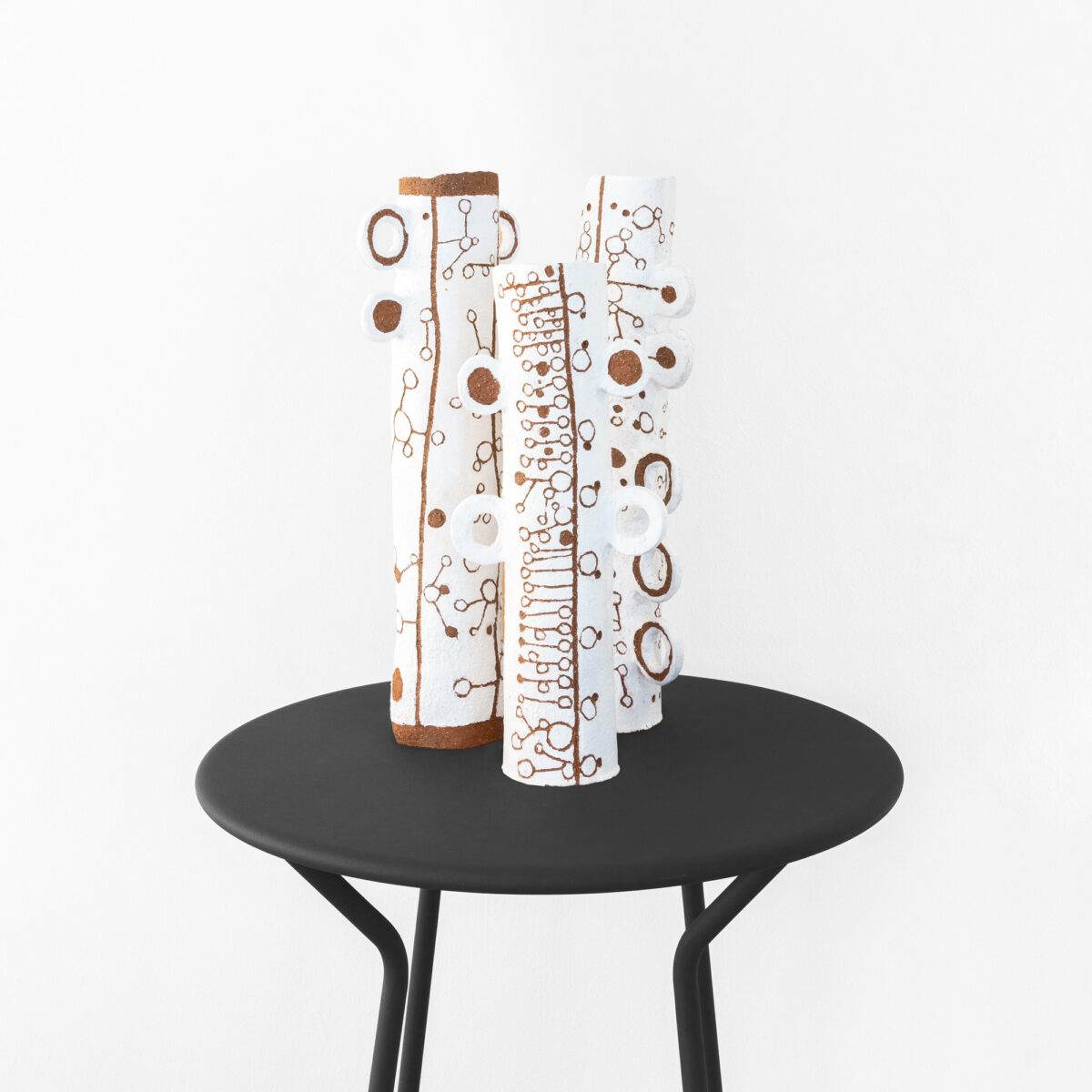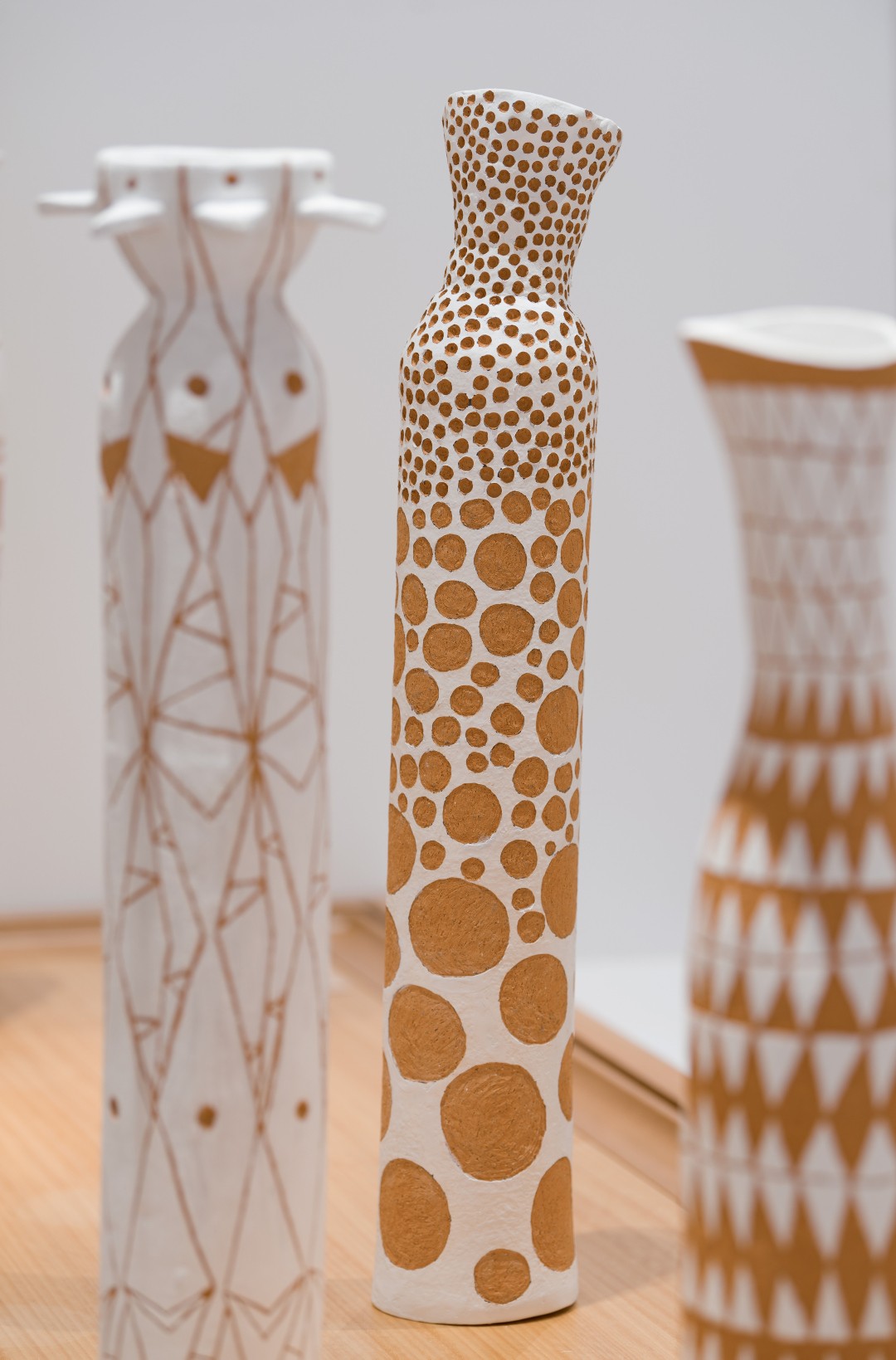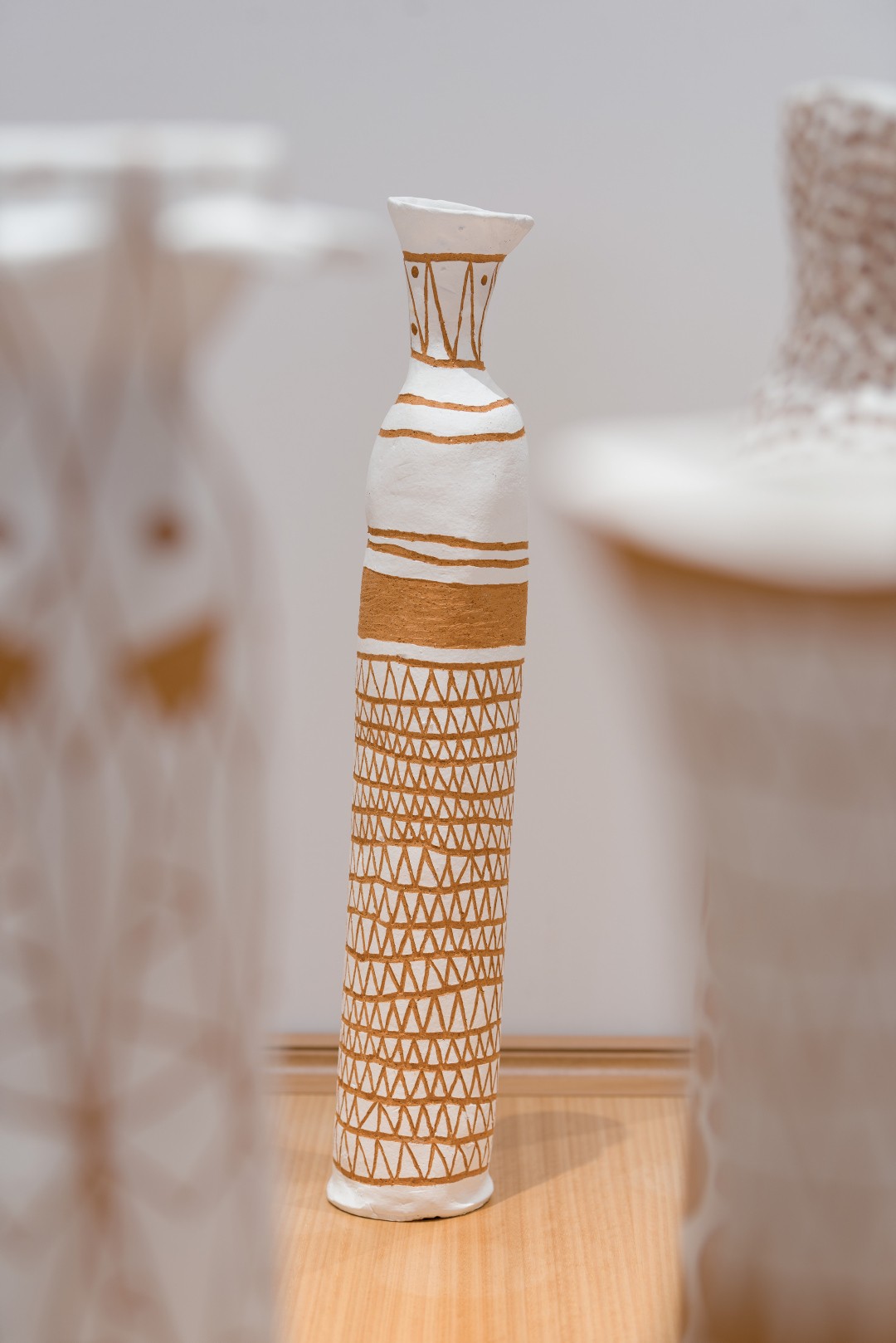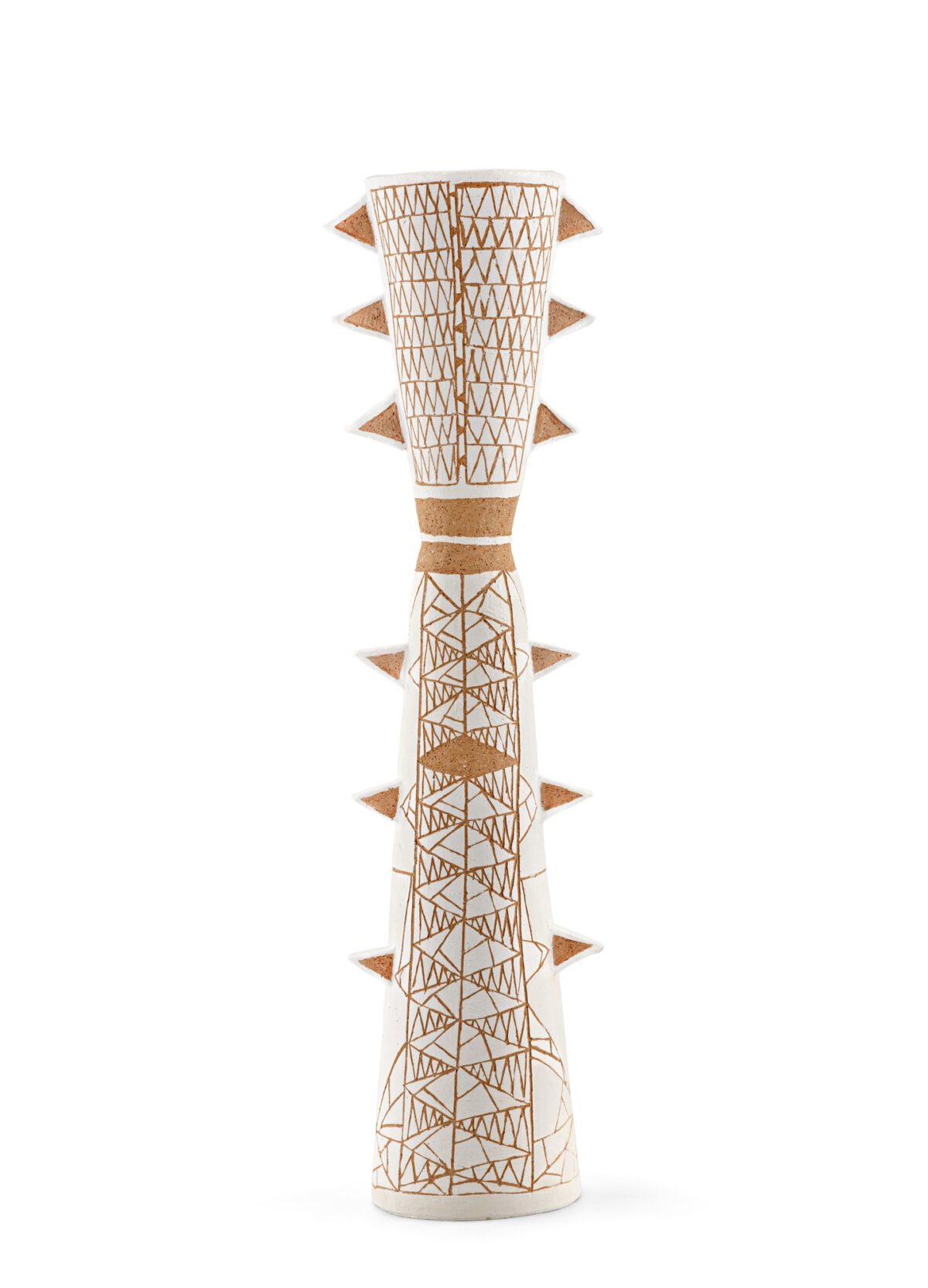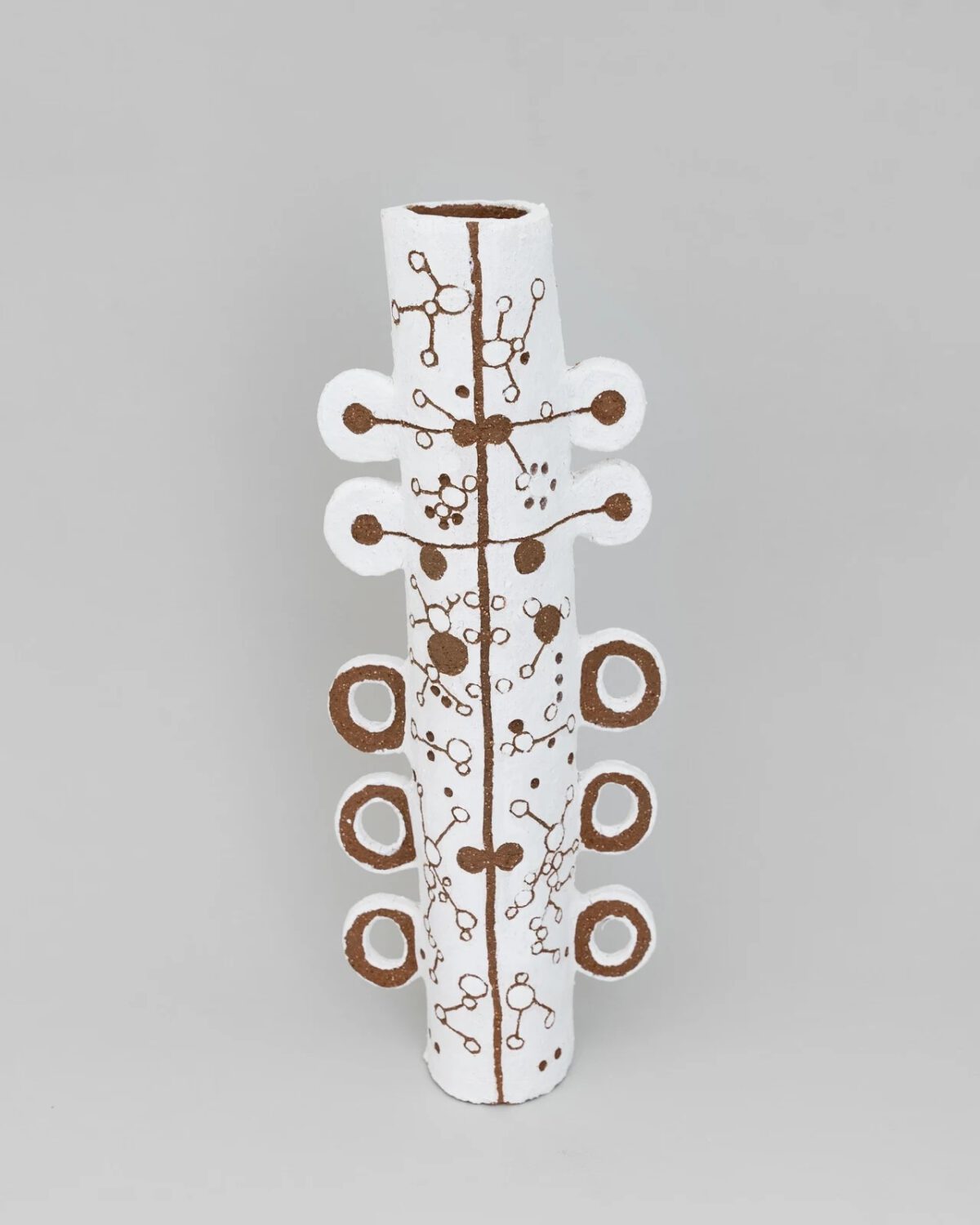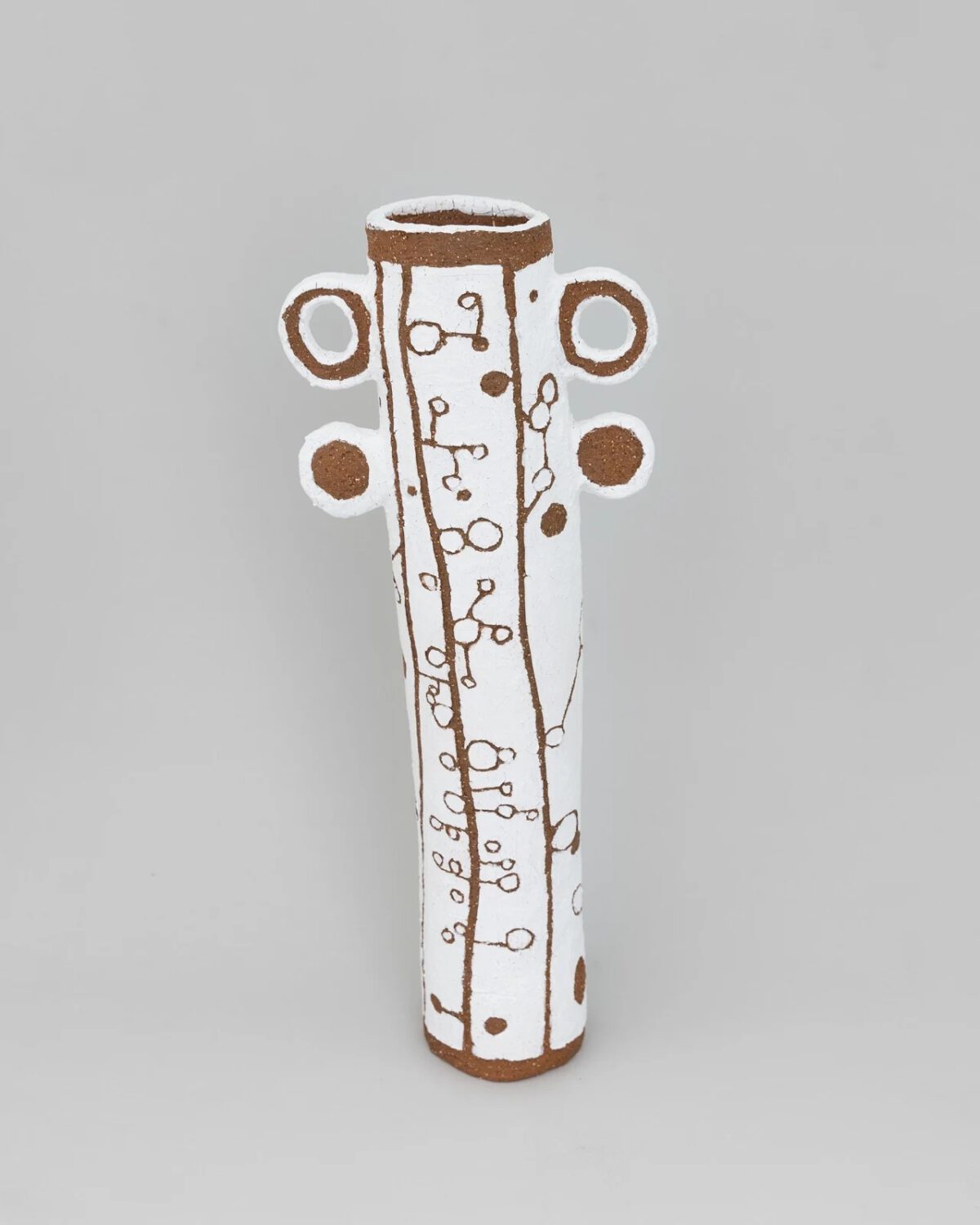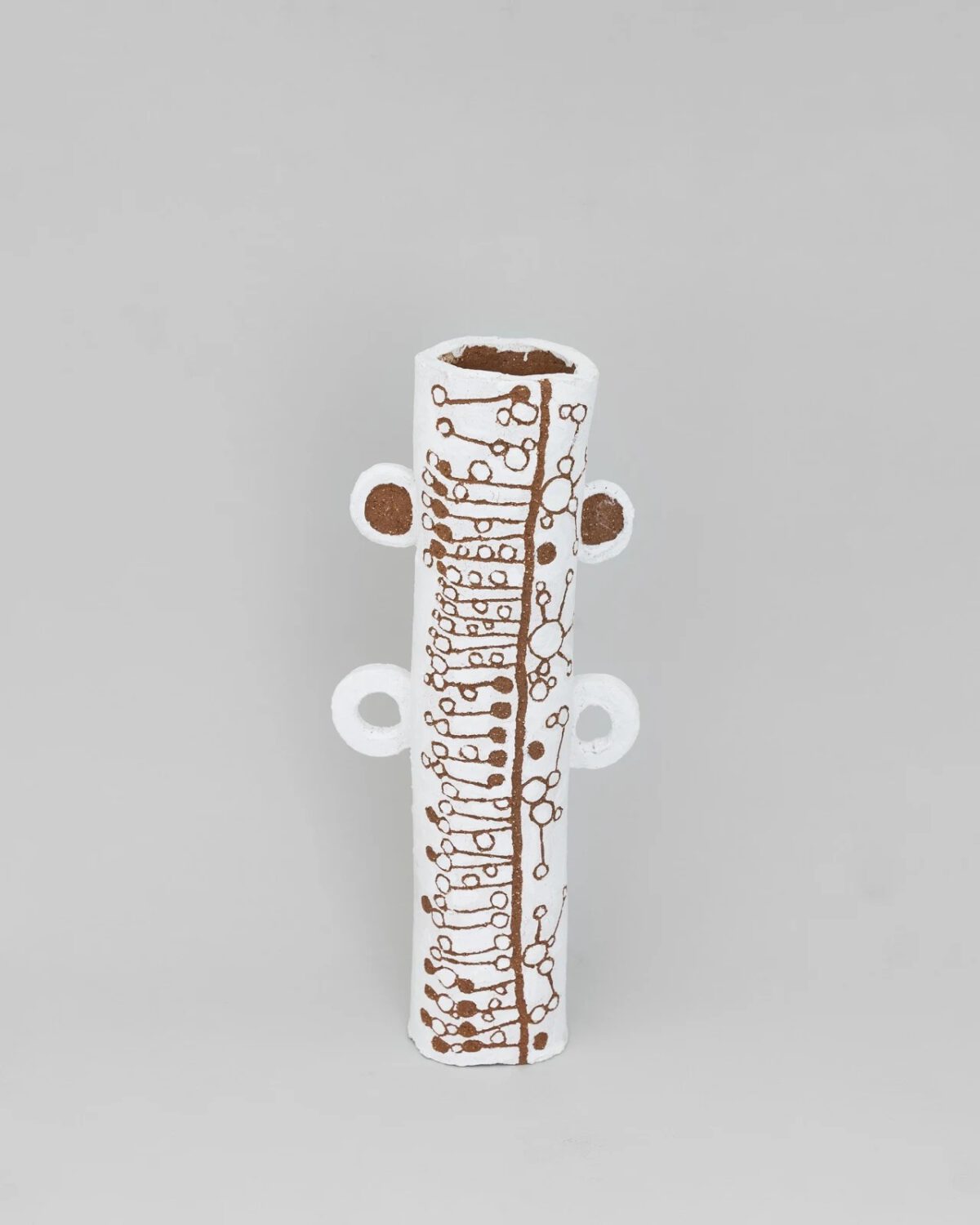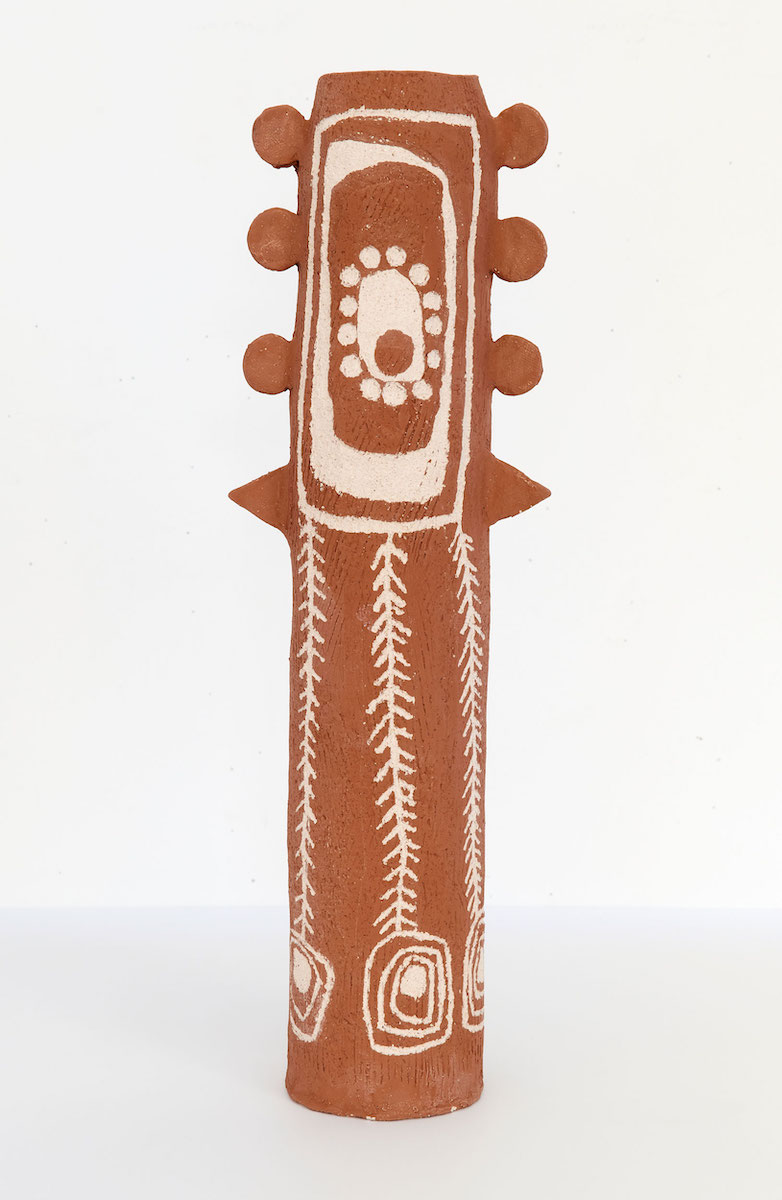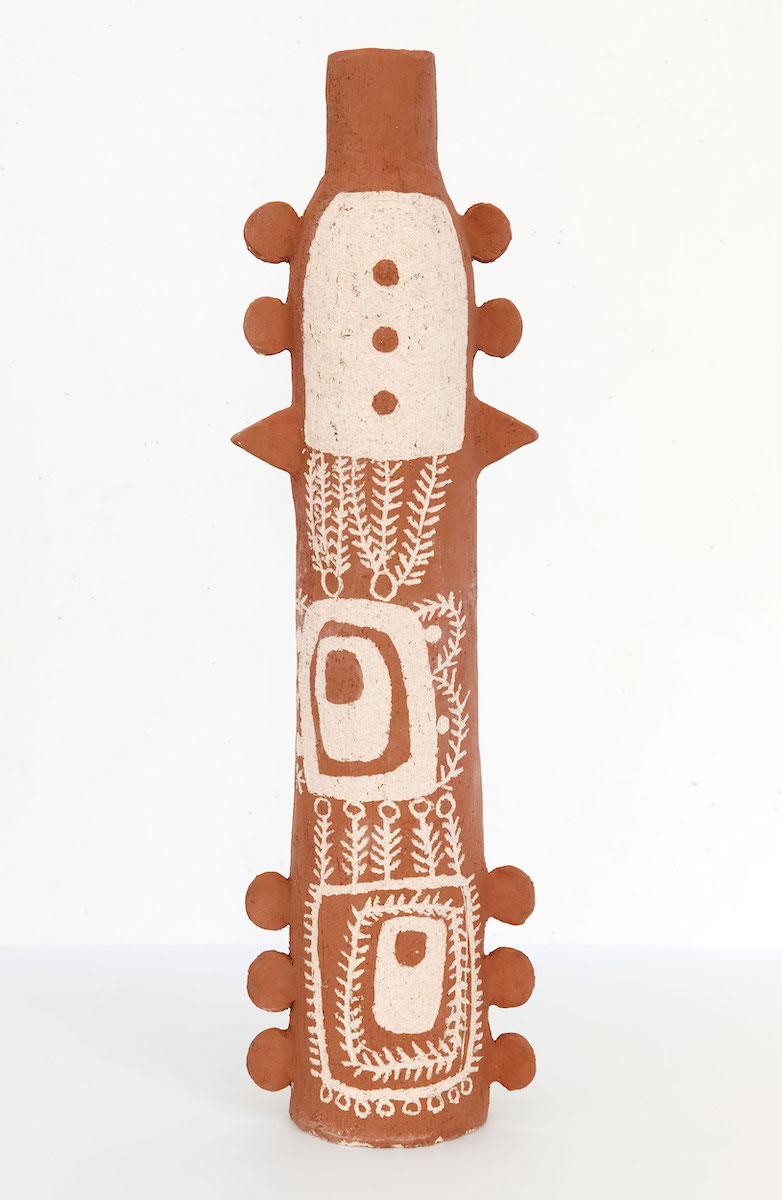Ceramics
Selected works
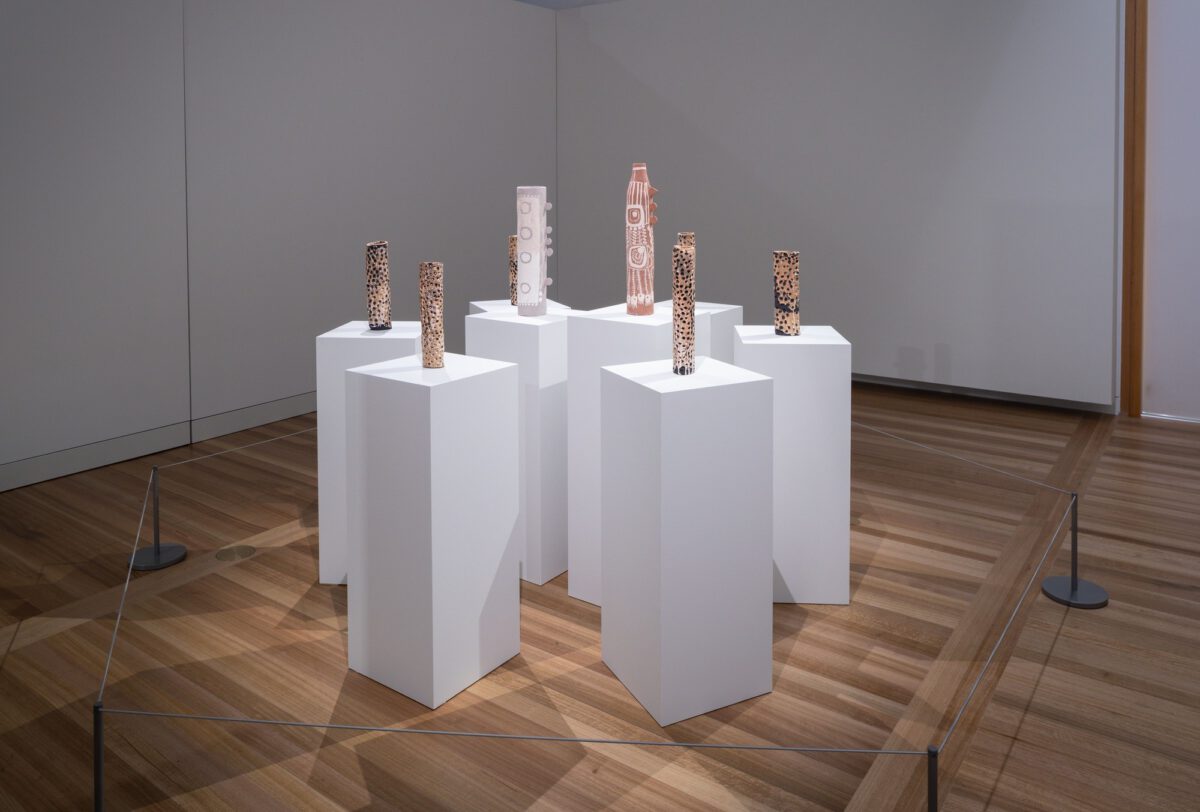
Winner of the Moriarty landscape award. Installation view of The Love Story of the Little River Rock Cod and the Red Kangaroo series, as installed in the Portrait 23 exhibition at the National Portrait Gallery of Australia, 2O23. The series addresses the powerful and ancient links between Country and identity.
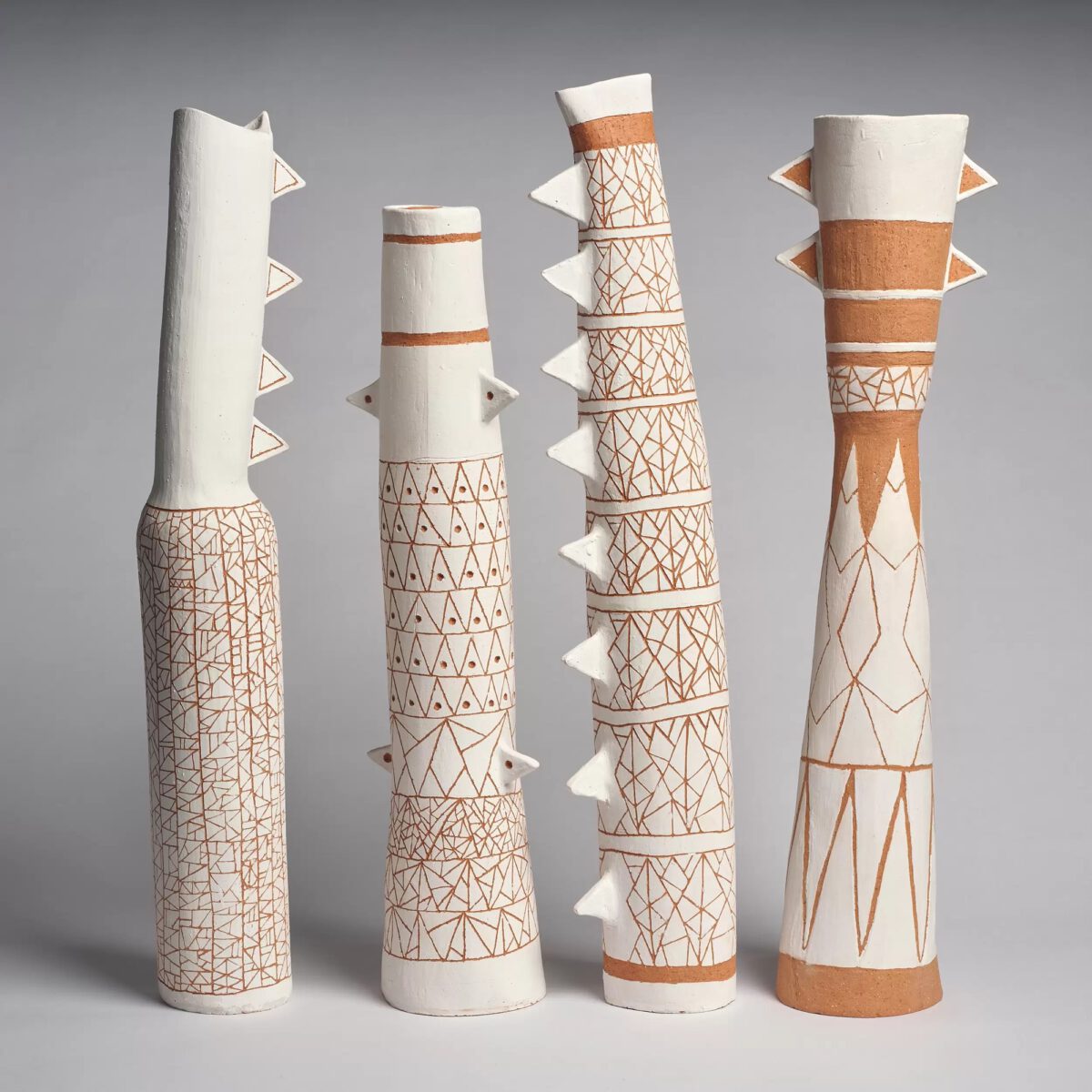
The saltwater crocodile, Iwayi, is an important cultural figure that is associated with keeping and maintaining cultural knowledge in the Cape York Peninsula area. Hobson’s ceramic work Iwayi directly references this important reptile. Made using clay, this sculpture is distinct in shape with protrusions on either side of the vessel which resemble the scutes on a crocodile’s back. The sculpture is pared back in colour, and Hobson has scratched into its surface the markings that are painted onto the body during the Iwayi ceremony in which people dance and sing to the saltwater crocodile. Hobson refers to this sculptural body of works as poles. The work was made at the Kalan Clay House in Coen, Queensland.
IWAYI, the saltwater crocodile is a cultural icon for the Indigenous people of Northern Australia. It is directly associated with the keeping of our Aboriginal lore on East Coast Cape York Peninsula. In our customs we dance and sing for ‘IWAYI’ and during this time we mark, and paint our bodies, which identifies us to ‘IWAYI’ our crocodile.
The two pieces, each titled Malkarti Pole (Dancing Pole), celebrate people coming together and rejoicing in their culture. The hand-built straight cylindrical structures with tapering necks are made from ochre-colour clay that are incised through a white slip with patterns based on skin designs of circles and triangles. Naomi says that the pole with the triangular designs indicates journeys – tracks that people follow across the land to meet and celebrate with dance and ceremony. The ceramic with the circles of various sizes indicates the meeting places – big and small (or of children and adults) – that are encountered along these journeys. While the two pieces are individual, together they speak about the sharing of culture and celebration through dance and people coming together over distance.
